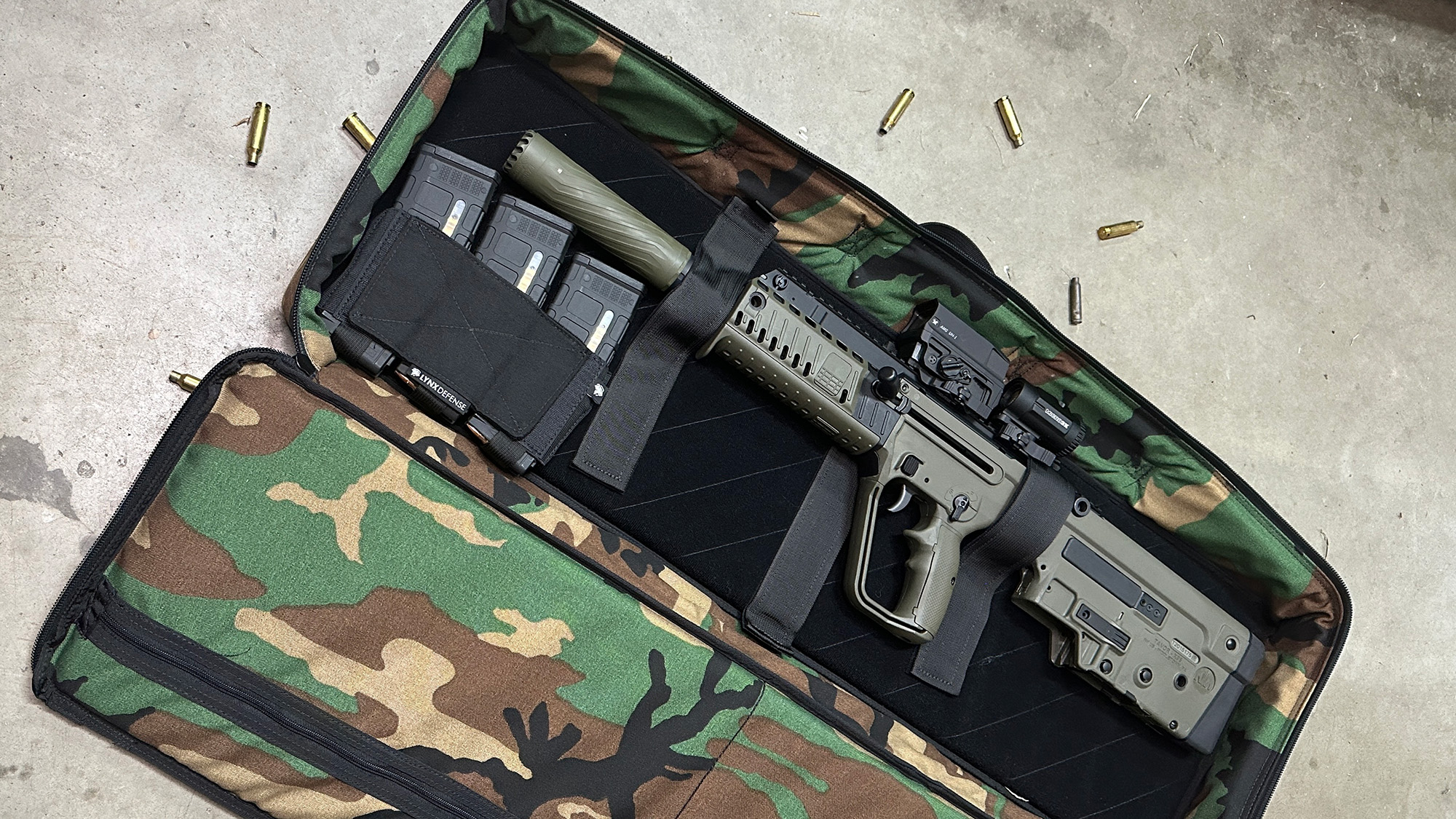
Ready to see what we have coming?
Lynx Defense will release some new things soon. Let us deliver them right to your inbox!

Lynx Defense will release some new things soon. Let us deliver them right to your inbox!
We may earn revenue from product links on this page and participate in affiliate programs. Learn More ›
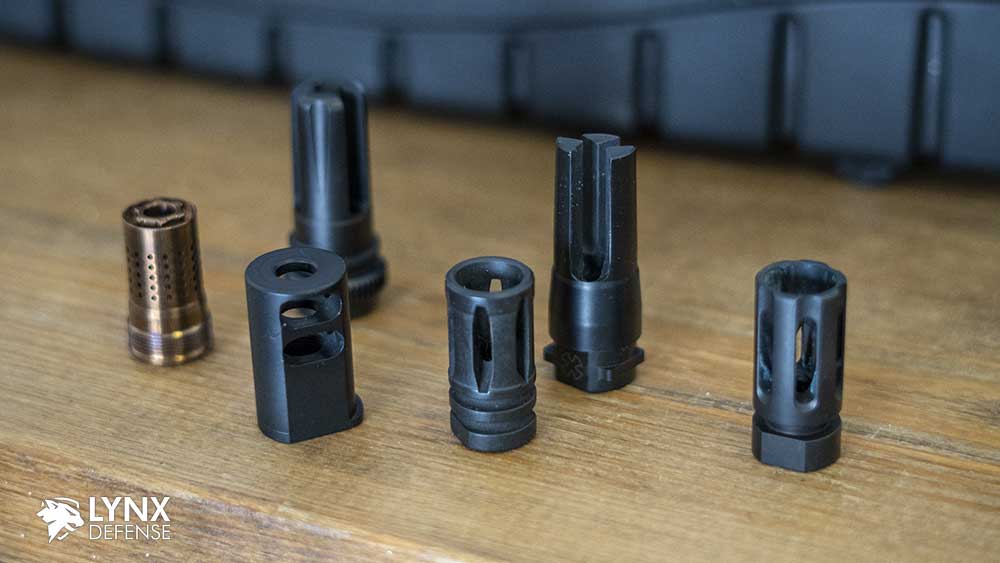
So you want to know the difference between all the muzzle device options for your AR-15? You may have heard of flash hiders, muzzle brakes, and compensators but are they all the same?
Muzzle devices serve one primary purpose: to redirect propellant gasses away from the shooter’s line of sight.
By keeping muzzle rise to a minimum, shooters are able to maintain better control over their firearms and stay on target for follow-up shots. Muzzle devices also help reduce felt recoil, making shooting more enjoyable overall. There are three main types of muzzle devices: flash hiders, muzzle brakes and compensators.
Let’s take a look at each one in turn.
The A2 flash hider is probably one of the most well-known muzzle devices for an AR-15 or possibly a well-known muzzle device on guns, period.
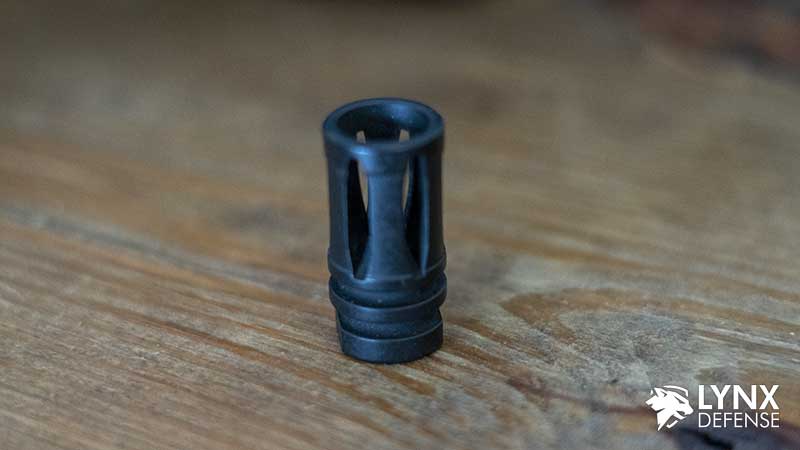
The A2 is the “standard flash hider” that comes on most rifles from the factory. Many guns like the Smith & Wesson M&P15 and Ruger AR556 come with the A2 flash hider.
Many companies, like Daniel Defense, are putting their own spin on the A2 design and making different cuts to make the flash hider look different. This is probably mostly cosmetic and doesn’t change the function much.
Speaking of function let’s talk about what a flash hider actually does.
In short, flash hiders are meant to reduce the flash from the muzzle break.
The more scientific answer: flash hiders cool or disperse the burning gases that exit the muzzle. Carbine length weapons are known to have much more flash than rifle length.
Rifles flash because of unburned gunpowder, and while the flash may not be a big deal during the day, it’s important to reduce it at night.
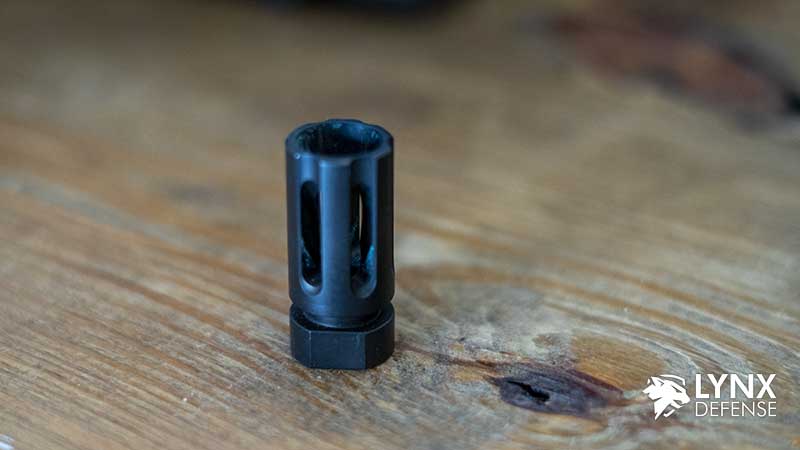
The flash can obstruct the shooter’s view and even cause you to be seen when trying to remain covert.
Flash hiders don’t eliminate flash, but they do a lot to mitigate the shooter’s amount of flash.
Like flash hiders, muzzle brakes thread to the end of the barrel but are designed for a different purpose.
So what does a muzzle brake actually do for the shooter that a flash hider can’t? Glad you asked!
As Joe Biden would say, “you know it does the… the.. . the… thing, you know..”, got it?
Didn’t think so. So let us be more helpful than that and explain what a muzzle brake actually does.
Muzzle brakes can reduce flash, like flash hiders, but they are designed to reduce the gun’s felt recoil.
A typical muzzle break has cuts that direct the gases and muzzle blast away from the shooter. You can easily spot a muzzle brake because the gas ports will be on the side of the device or 180 degrees from the muzzle.
You may not make any friends if you are shooting a rifle with a muzzle brake or compensator, and that has to stand beside you. Anyone around you often feels the concussion of these style muzzle devices.
A compensator attaches to the gun just like any of the other mentioned muzzle devices and is similar to muzzle brakes.
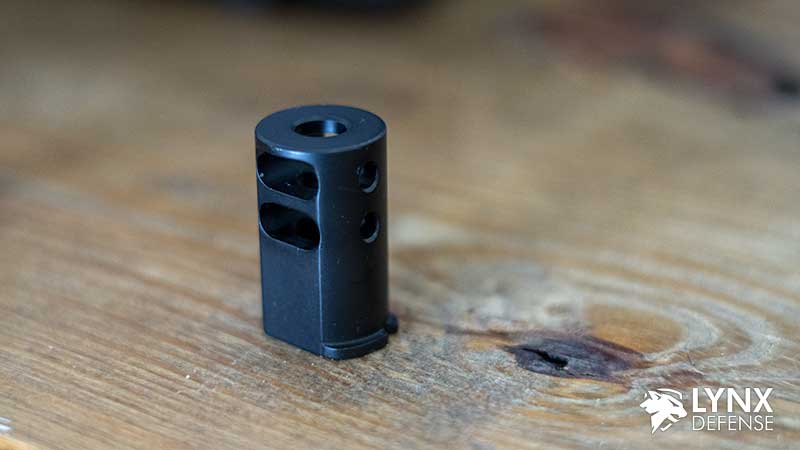
Compensators reduce the muzzle rise of the gun. Specifically, a vertical rise of the muzzle compensators achieves this by venting the gases out of top cuts on the device.
This allows the shooter to have a flatter shooting gun and keep the gun on target easier in multiple strings of fire.
The standard A2 muzzle device acts as a flash hider and compensator as it has top-cut gas ports.
Compensators are easy to identify with the top holes, but they also have size vents similar to muzzle brakes.
VG6 makes a well-known compensator for AR-15s, and they are a part of the Aero Precision/Ballistic Advantage company.
Well, that depends. Do you want to reduce visible flash? What about muzzle rise? Please take what you’ve read above and apply it to fit your needs best and desired outcome.
Where can I find a flash hider for the GSG 52P?
I have a question that I haven’t seen discussed before. Does using a muzzle brake vs a flash hider, in conjuction with a suppressor, increase flash signature to any measurable or noticeable degree? I’m currently using a Surefire muzzle brake with a Surefire Socom556 RC2. I went with a brake to act as a sacrificial baffle. Saying this, flash signature reduction is my highest priority so I’m willing to switch it out for a flash hider if there’s a noticeable difference.
Thanks for providing this info. I knew it, but have many friends that do not understand. They worry it’s illegal to put 1 on.